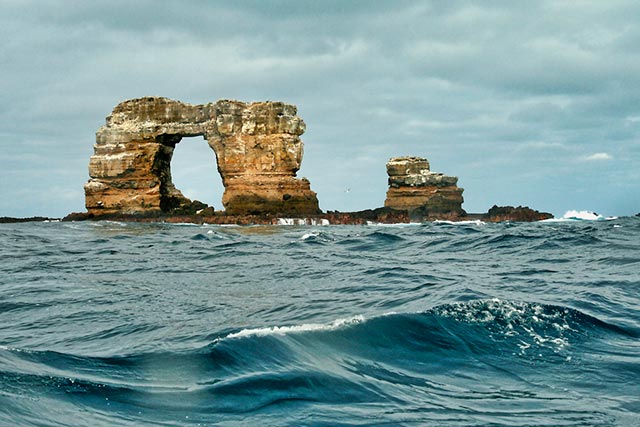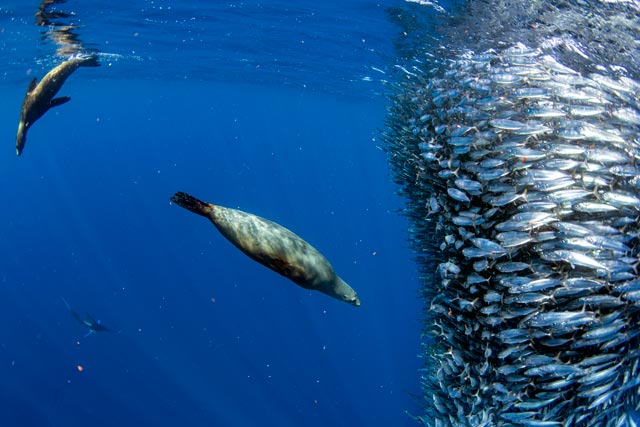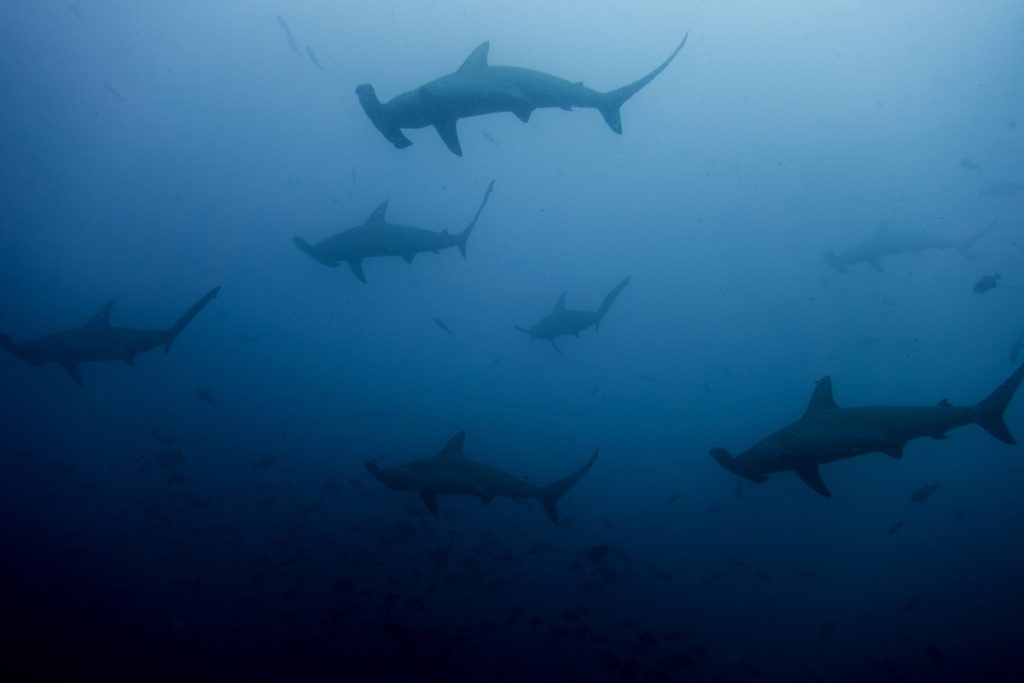Overfishing has reduced biomass of most sharks and other large predatory fishes worldwide by over 90%, and even remote locations have been severely impacted. The islands of Darwin and Wolf in the far north of the Galapagos Marine Reserve though, are known for their large shark abundance, making them a global scuba diving and conservation hotspot.

In a study published this week in the journal PeerJ, scientists from the Charles Darwin Research Station (CDRS) and the National Geographic Society revealed that the islands are home to the largest shark biomass on the planet reported to date at 12.4 tons per hectare.
Despite this, the abundance of reef fishes around the marine reserve, such as groupers, has been severely reduced because of unsustainable fishing practices. Although Darwin and Wolf are within the reserve, they were not fully protected from fishing until March 2016. Given how important the Galapagos are to Ecuador’s dive tourism industry and to the well-being of these top predators, the scientists hope that the current protection will ensure the long-term conservation of this marine and diving hotspot.
“The islands of Darwin and Wolf are jewels in the crown of the Galapagos because of the sheer abundance of sharks and other top predators,” said Pelayo Salinas de Leon, the paper’s lead author and senior marine ecologist at the Charles Darwin Research Station.
The establishment of marine protected areas, especially no-take areas where all forms of fishing are prohibited, have been shown to be one of the most successful management tools to confront global ecosystem degradation.
The Galapagos Islands are known worldwide for their iconic terrestrial fauna and flora, due in large part to Charles Darwin. However, the underwater Galapagos remains under-studied and largely unknown compared to terrestrial ecosystems.
Galapagos is the only tropical archipelago in the world at the cross-roads of major current systems that bring both warm and cold waters. From the northeast, the Panama Current brings warm water; from the southeast the Peru current bring cold water; and from the west, the subsurface equatorial undercurrent (SEC) also bring cold water from the deep. The oceanographic setting surrounding Galapagos results in a wide range of marine ecosystems and populations, that includes from tropical species like corals or reef sharks to temperate and sub-Antarctic species like the Galapagos fur seal (Arctocephalus galapagoensis) or the waived albatross (Phoebastria irrorata).
 Image: Andrea Izzotti/DepositPhotosImage: Andrea Izzotti/DepositPhotos
Image: Andrea Izzotti/DepositPhotosImage: Andrea Izzotti/DepositPhotosDarwin and Wolf are the two most northern islands in the Galapagos. They are heavily influenced by the warm Panama Current which supports their sub-tropical marine communities.
These two small islands (approximately 1 and 2 km2, respectively) are the tops of eroded, extinct submerged volcanoes, which rose from the surrounding seafloor over 2000 m below. They experience a warm season from January to June and a cool season from July to December. Animals like hammerhead sharks frequently move between the islands, which are 40 km apart, during the cold season.
During the research divers used a stereo-video system (DOV) to record fish around Darwin and Wolf over two consecutive years during the cold season that spans July to December. DOVs use two Canon HFG-25 high-definition cameras mounted 0.7 m apart on a base bar inwardly converged at seven degrees and are operated by experienced divers using standard SCUBA equipment.
The surveys were considerably larger than those reported at Costa Rica’s Cocos Island National Park and the Chagos Marine Reserve in the Indian Ocean, home to the world’s next largest shark biomasses.
Nearly 73% of the total fish biomass around Darwin and Wolf was accounted for by sharks, primarily hammerheads (Sphryna lewini 48%), Galapagos (Carcharhinus galapagensis 19%), and blacktips (Carcharhinus limbatus 5%).
Further Reading
Salinas de Leon P, Acuta-Marrero D, Rastoin E, Friedlander AM, Donovan MK, Sala E. (2016) Largest global shark biomass found in the northern Galapagos Islands of Darwin and Wolf. PeerJ 4:e1911 https://doi.org/10.7717/peerj.1911
Diving the Galapagos Islands of Darwin and Wolf
Image credits:
- hammerhead sharks: DepositPhotos
- sealion-fish-dp: Andrea Izzotti/DepositPhotos
